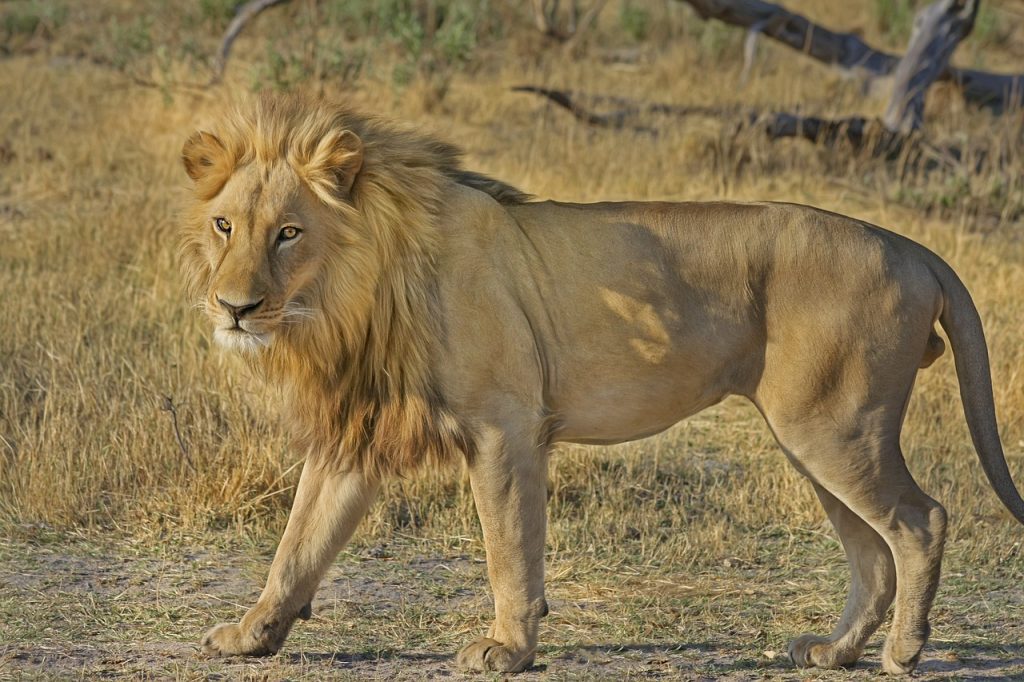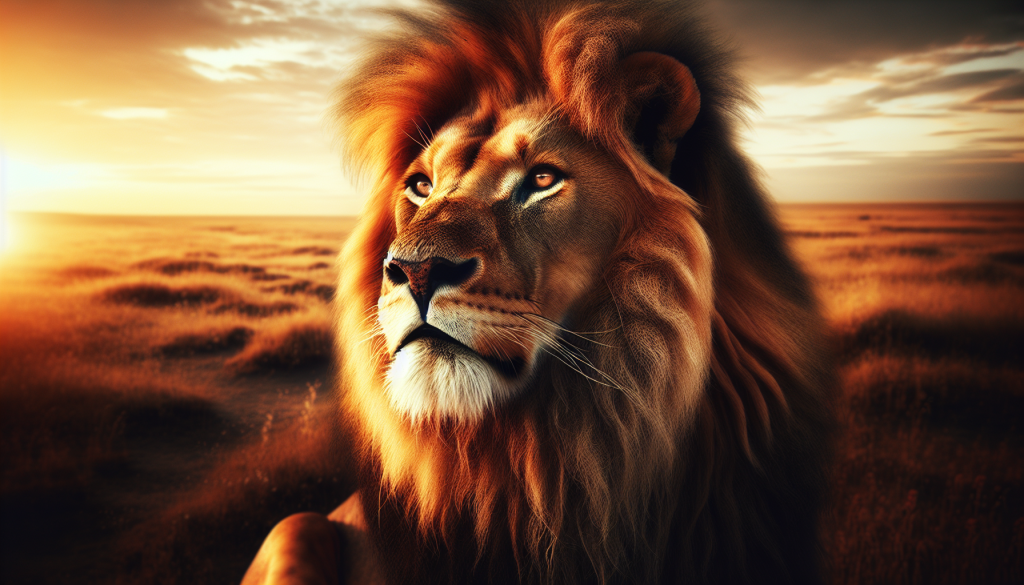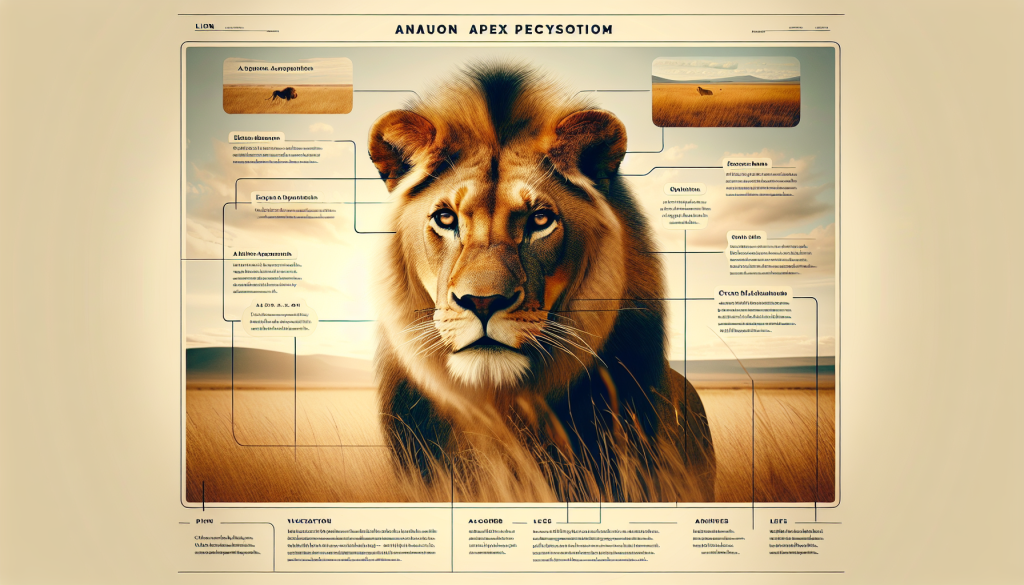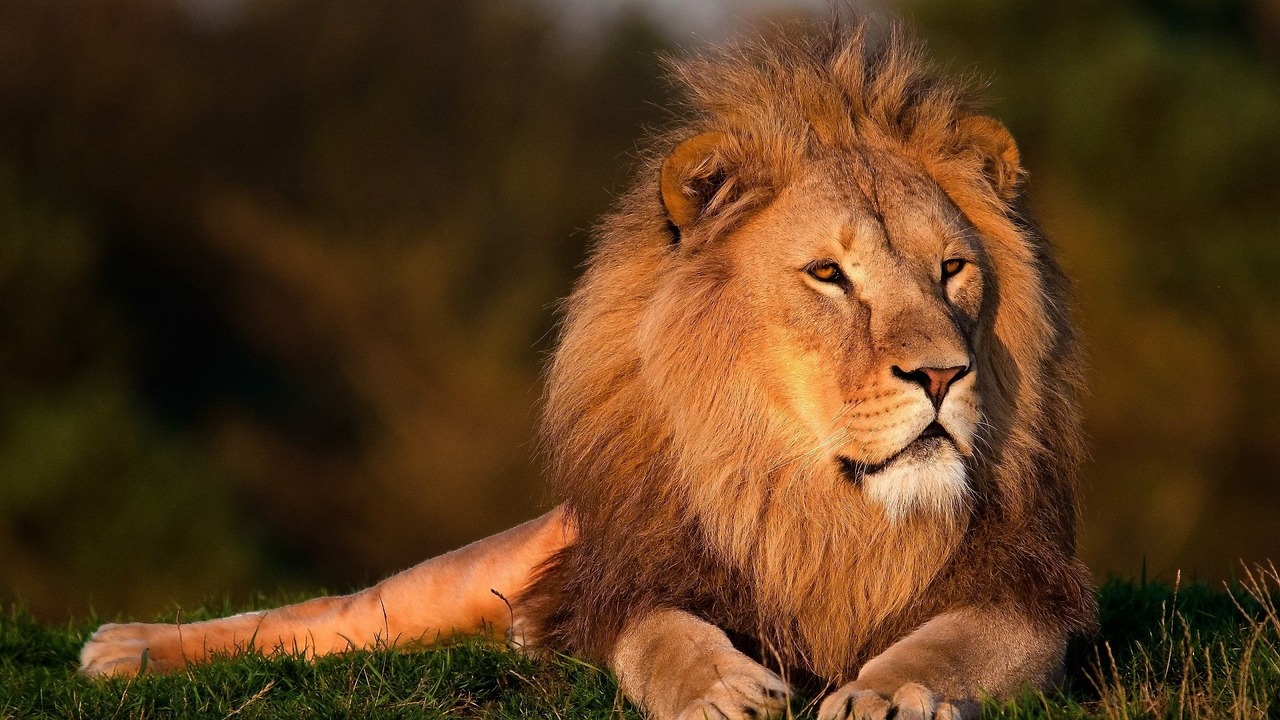In this article, we will explore the fascinating world of lion ecological impact and how these magnificent creatures play a vital role in ecosystems. Lions, known as the kings of the animal kingdom, are not only awe-inspiring but also have a profound impact on their surrounding environment. From regulating prey populations to influencing vegetation growth, experts have studied and unraveled the intricate connections between lions and the ecosystems they inhabit. Join us as we delve into the captivating realm of lion ecology and discover the invaluable role these majestic predators play in maintaining the delicate balance of nature.
1. Lion Ecological Role
Lions play a crucial ecological role in their respective habitats, particularly in African ecosystems where they are the apex predators. Understanding their ecological impact helps us comprehend the intricate relationships within ecosystems and emphasizes the need for their conservation.
1.1 Predator-Prey Relationships
Lions are formidable predators, and their interactions with prey species have a profound impact on the delicate balance of the ecosystem. By preying on herbivores such as zebras, wildebeests, and buffalo, lions regulate herbivore populations, preventing overgrazing and maintaining the health of plant populations. This predator-prey relationship is essential for maintaining biodiversity and ensuring the overall stability of the ecosystem.
1.2 Trophic Cascade Effects
Lions’ presence not only affects prey populations directly but also exerts an indirect influence on other species lower down the food chain. This phenomenon, known as trophic cascade, occurs when changes at the top of the food chain ripple through to affect lower trophic levels. In the absence of lions, herbivore populations may surge, leading to increased grazing pressure on vegetation, which, in turn, affects other plant and animal species. Lions, as apex predators, mitigate these trophic cascade effects and help maintain a healthy ecosystem.
1.3 Apex Predator Status
As apex predators, lions occupy the highest trophic level in the food chain. This status gives them unique ecological importance as they control the populations of both herbivores and lower-level predators. Without their presence, the delicate balance of the ecosystem can be disrupted, leading to ecological imbalances and potential cascading effects. Therefore, preserving lions as apex predators is crucial for the overall health and stability of the ecosystems they inhabit.
2. Lion Population Dynamics
Understanding the population dynamics of lions is essential for effective conservation strategies. This involves studying their range and distribution, population size and growth, as well as the challenges faced in their conservation efforts.
2.1 Range and Distribution
Lions were once widely distributed throughout Africa, Europe, and Asia. However, their range has significantly diminished over the years due to habitat loss and fragmentation caused by human activities. Today, lions are primarily found in sub-Saharan Africa, with small populations in India. Understanding their current range and distribution helps conservationists identify areas where conservation efforts should be focused.
2.2 Population Size and Growth
Estimating lion populations is crucial for assessing their conservation status. However, this task can be challenging due to their vast habitats and elusive nature. Nevertheless, through advanced monitoring techniques and research initiatives, conservationists have estimated the population size and growth trends of lion populations in various regions. This information enables targeted conservation planning and helps track the effectiveness of conservation interventions.
2.3 Conservation Challenges
Conserving lion populations faces numerous challenges. Habitat loss, human-wildlife conflicts, and poaching pose significant threats to their survival. As human populations expand and encroach upon lion territories, conflicts arise due to livestock depredation. Additionally, illegal wildlife trade also contributes to the decline of lion populations. Overcoming these conservation challenges requires collaboration between governments, local communities, and conservation organizations to establish effective conservation strategies and mitigate human-lion conflicts.

3. Lion and Herbivore Interactions
The interactions between lions and herbivores have both direct and indirect effects on ecosystems. Understanding these interactions provides insights into prey selection, hunting behavior, and the impact on vegetation.
3.1 Prey Selection and Hunting Behavior
Lions exhibit selective predation, targeting prey species based on their availability and vulnerability. Their hunting behavior plays a significant role in shaping prey populations and preventing herbivore overpopulation. By preferentially targeting older or weaker individuals, lions help maintain the overall fitness and genetic diversity within herbivore populations.
3.2 Grazing Pressure Regulation
Herbivores exert substantial grazing pressure on vegetation, which, if left unregulated, can damage plant populations and disrupt ecosystem dynamics. Lions play a crucial role in regulating herbivore populations through predation, preventing overgrazing and maintaining a balance between herbivores and available vegetation resources.
3.3 Impact on Vegetation
The presence of lions influences vegetation through their effects on herbivore populations. By controlling herbivore numbers, lions indirectly impact plant communities. Reduced grazing pressure results in healthier vegetation, improved habitat quality, and enhanced biodiversity. This demonstrates the cascading effects that lions have on ecosystems beyond their direct interactions with prey species.
4. Lion and Carnivore Coexistence
Lions coexist with a variety of other carnivore species, and their interactions shape the dynamics within carnivore communities. Examining these interactions sheds light on competition for resources and the challenges of cohabiting shared landscapes.
4.1 Interactions with Other Carnivores
Lions share their habitats with other carnivores, such as hyenas, leopards, and cheetahs. Interactions between these species can range from competition for resources, such as prey and territory, to occasional scavenging. Understanding the dynamics of these interactions helps to grasp the complexity of carnivore communities and their impact on ecosystem functioning.
4.2 Competition for Resources
Within shared landscapes, competition for resources can arise between lions and other carnivore species. For example, lions and hyenas often compete for carcasses, leading to occasional conflicts. These resource competitions shape carnivore behavior, distribution, and population dynamics, ultimately influencing ecosystem dynamics at large.
4.3 Shared Landscapes
Lions, as apex predators, occupy a unique ecological niche within shared landscapes. Their role in regulating prey populations and maintaining ecosystem balance creates a ripple effect that benefits various other species within the community. Coexistence between lions and other carnivores, therefore, contributes to the overall ecological integrity and biodiversity of the shared habitats.

5. Lion and Human Conflicts
Human-lion conflicts arise due to the overlap of lion territories with human settlements and livestock rearing areas. Understanding these conflicts is crucial for developing strategies to mitigate their negative impacts.
5.1 Livestock Depredation
Lions occasionally prey on livestock, leading to financial losses and conflict between local communities and conservation efforts. Protecting livestock from lion predation poses a significant challenge, particularly in areas where people rely heavily on their livestock for their livelihoods. Finding viable and sustainable solutions to reduce livestock depredation is crucial for fostering coexistence between lions and local communities.
5.2 Human-Wildlife Conflict Mitigation
Efforts to mitigate human-wildlife conflicts involve a range of strategies, including predator-proof enclosures, community-based early warning systems, and compensation schemes. These measures aim to minimize the negative impacts of lions on local communities while ensuring that conservation goals are met. By addressing the socio-economic concerns of affected communities, it becomes possible to promote peaceful coexistence and support lion conservation efforts.
5.3 Economic and Social Impacts
Human-lion conflicts can have significant economic and social implications for local communities. Loss of livestock and crops can impact food security and livelihoods, while perceived threats from lions can engender fear and hostility towards their conservation. Balancing the economic and social needs of communities with the conservation of lions is essential for generating local support and ensuring the long-term success of conservation initiatives.
6. Lion Conservation Strategies
Preserving lion populations necessitates the implementation of diverse conservation strategies. These encompass protected area management, anti-poaching measures, and community-based conservation programs.
6.1 Protected Area Management
Establishing and effectively managing protected areas are vital for lion conservation. Protected areas provide safe havens for lion populations, safeguard their habitats from encroachment, and regulate human activities within these regions. Effective management ensures that lions have sufficient space, prey availability, and protection from external threats.
6.2 Anti-Poaching Measures
Poaching remains a significant threat to lion populations, driven by the illegal trade in their body parts and traditional medicine. Anti-poaching measures, including law enforcement, surveillance technologies, and increased penalties, are crucial for deterring poachers and disrupting illegal wildlife trade networks. Collaborative efforts between governments, conservation organizations, and local communities are necessary to combat poaching effectively.
6.3 Community-Based Conservation Programs
Engaging local communities in lion conservation efforts is essential for successful and sustainable outcomes. Community-based conservation programs recognize the importance of incorporating local knowledge, cultural practices, and socio-economic considerations into conservation strategies. By fostering a sense of ownership and providing alternative livelihood opportunities, such programs help align the interests of local communities with the long-term conservation of lions and their habitats.

7. Lion’s Role in Biodiversity Conservation
Lions serve as vital components of ecosystems, playing significant roles in biodiversity conservation. Understanding their role as an umbrella species, their impact on ecosystem resilience, and the opportunities for ecotourism helps highlight their broader contributions to conservation efforts.
7.1 Umbrella Species Concept
Lions are considered umbrella species, meaning that their conservation serves as a proxy for conserving a wide range of flora and fauna within their habitats. By focusing on the preservation of lion populations and their habitats, conservationists indirectly protect various other species that share the same ecosystems. The conservation of lions, therefore, extends beyond their charismatic presence, contributing to the preservation of entire ecosystems.
7.2 Impact on Ecosystem Resilience
Ecosystem resilience refers to the ability of an ecosystem to withstand environmental stressors and recover from disturbances. Lions, as top predators, influence prey populations and herbivore behavior, thus shaping the structure and functioning of ecosystems. By regulating herbivory, promoting biodiversity, and enhancing the overall functioning of ecosystems, lions contribute to their long-term resilience in the face of changing environmental conditions.
7.3 Ecotourism Opportunities
Lions have immense potential for sustainable ecotourism, generating economic benefits for local communities and supporting conservation efforts. Responsible wildlife tourism centered around the observation of lions in their natural habitats can provide alternative revenue streams and incentives for local communities to engage in conservation activities. Ecotourism offers a way to appreciate the beauty and significance of lions while contributing to their long-term conservation.
8. Lion Reintroduction and Translocation
Reintroduction and translocation initiatives aim to reestablish lion populations in areas where they have become locally extinct. Understanding the challenges and benefits of such programs, as well as genetic considerations, is crucial for successful reintroduction efforts.
8.1 Reintroduction Programs
Lion reintroduction programs involve relocating lions from established populations to areas where they have been extirpated. With careful planning and assessment of suitability, reintroduction programs can help restore lion populations and reintegrate them into their historical habitats. These initiatives require collaboration between wildlife authorities, conservation organizations, and local communities to ensure the success and long-term viability of reintroduced populations.
8.2 Challenges and Benefits
Reintroduction projects face numerous challenges, including finding suitable habitats, managing potential human-lion conflicts, and ensuring genetic diversity of the reintroduced populations. However, successful reintroductions bring several benefits, such as restoring ecosystem balance, enhancing biodiversity, and increasing the prospects for the long-term survival of lions in the wild. These projects present unique opportunities to revive lion populations and secure their future.
8.3 Genetic Considerations
Maintaining genetic diversity is crucial for the long-term viability of lion populations. Reintroduction programs must carefully consider the genetic makeup of both the source and recipient populations to minimize the risk of inbreeding and genetic health issues. Genetic assessments, monitoring, and appropriate breeding strategies are essential components of reintroduction projects to ensure the preservation of healthy and genetically robust lion populations.

9. Lion Research and Monitoring
Effective lion conservation relies on robust research and monitoring efforts. Tracking and collaring lions, studying their behavior and movement patterns, and establishing long-term monitoring programs contribute to our understanding of lion ecology and aid in conservation decision-making.
9.1 Tracking and Collaring
Tracking and collaring lions provide valuable insights into their movements, home ranges, and interactions with other individuals or species. This information helps identify critical habitats, migration corridors, and potential threats to lion populations. Tracking technologies, such as GPS collars and satellite tracking, enable researchers to gather in-depth data, contributing to conservation planning and management.
9.2 Studying Behavior and Movement Patterns
Studying lion behavior and movement patterns enhances our understanding of their ecological requirements and social dynamics. Research on pride structure, hunting strategies, and reproductive behaviors helps identify key factors influencing their population dynamics. Monitoring changes in these patterns over time provides a basis for adaptive management and the development of targeted conservation strategies.
9.3 Long-Term Monitoring Efforts
Long-term monitoring programs are essential for assessing the success of conservation interventions and measuring the response of lion populations to changing environmental conditions. Regular monitoring allows researchers and conservationists to track population trends, assess threats, and evaluate the effectiveness of conservation strategies. It provides the necessary data to adapt management approaches and ensure the ongoing conservation of lion populations.
10. Future of Lions in Ecosystems
Looking ahead, it is crucial to consider the potential impacts of climate change and human-driven landscape changes on lion populations and the ecosystems they inhabit. Conservation planning for the future requires understanding these challenges and developing adaptive strategies.
10.1 Climate Change Impacts
Climate change poses significant challenges for lion populations, affecting their habitats, prey availability, and overall ecological dynamics. Changes in precipitation patterns, habitat fragmentation, and increased frequency of extreme weather events can all impact lion populations and their ability to thrive. Implementing climate change adaptation strategies, such as habitat protection and restoration, becomes essential to safeguard the future of lions in ecosystems.
10.2 Human-Driven Landscape Changes
Human activities, such as deforestation, agricultural expansion, and urbanization, result in habitat loss and fragmentation, posing serious threats to lion populations. Addressing these landscape changes requires a combination of land-use planning, habitat restoration, and sustainable development practices. Balancing human needs with conservation priorities is critical for ensuring the coexistence of lions and other wildlife in shared landscapes.
10.3 Conservation Planning for the Future
Conservation planning for the future demands a holistic and integrated approach. It involves collaboration between scientists, conservationists, policymakers, and local communities to develop adaptive management strategies. These strategies focus on addressing habitat loss, reducing human-wildlife conflicts, and promoting sustainable land-use practices. By proactively planning for the future, we can secure the long-term survival of lions in ecosystems and preserve their ecological significance for generations to come.
In conclusion, lions play a crucial role in the ecological dynamics of their habitats. As apex predators, they regulate prey populations, contribute to trophic cascade effects, and shape the resilience of ecosystems. Understanding their ecological impact is vital for effective conservation strategies that address population dynamics, human-lion conflicts, carnivore coexistence, and the broader implications for biodiversity conservation. By valuing lions as keystones of their ecosystems, we can work towards securing their future and the ecological integrity of the landscapes they inhabit.


